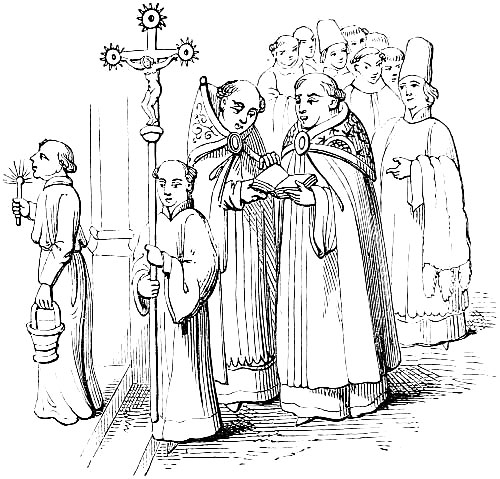Lesson One: Pre-Reformation Environment in England
Demographic, Social Hierarchy & Politics
Underlying Religious Practices
Understanding the causes leading to the establishment of the Church of England – the predecessor of the American Episcopal Church – requires an overview of the basic demographic, social and political realities of this distant, pre-industrial, hierarchical world.
Religion was deeply embedded in human life in this era, especially the nature of ecclesiastical and political authorities for the experience of early modern Christians. Without some understanding of late medieval Christianity, it is impossible to grasp the nature or significance of what followed.
Late medieval Christianity was not a rigid set of doctrines enforced by a monolithic Church, but a core set of beliefs and practices surrounded by a wide variety of elaborations that evolved over time, exhibited great local variation, and found diverse institutional expressions.
Medieval Christianity was pervaded by belief in divine providence and
in sacramentality. Depending on how one was judged by God, death was a transition to eternal salvation in heaven, eternal damnation in hell, or hope of eventual salvation in purgatory.
PreReformation Churches

Medieval Democracy
In 1500, the population of England was about 3 million. Ninety percent of the people were illiterate peasants or small farmers, exposed to famine, endemic disease, the ravages of war, and more. About one-half of children lived beyond ten years. It is not an exaggeration to say the vast majority of the population found life hard.
Only four towns in England had populations greater than 10,000 people, London, with its estimated 60,000 inhabitants was the largest. Most town residents knew each other because the houses were packed so closely together. Noblemen and leading merchants typically maintained large properties in urban areas while the church owned houses, tenements and plots of land all over the city.
Social Hierarchy
England was fundamentally a society of ranks and hierarchy with limited social mobility. Stratification and hierarchy were such that most people would remain in the status to which they were born. In rural areas, the gulf between peasants and lords, was especially wide. Landlords collected feudal dues and the church received mandatory tithes.
Wealthy patricians and merchants were the top level of the hierarchy in towns, followed by urban professionals, members of craft guilds, and domestic servants and wage laborers, with the indigent poor at the bottom. An estimated ten to twenty percent of residents were homeless, depending on charity and their wits for survival.
Political Power
In rural areas, peasants were politically dominated by the large landowners, nobility and monasteries. Local political institutions generally included some form of a city council that cooperated and competed with merchant and craft guilds. Only male heads of households could participate in civic government.
Clergy members were exempt from civic obligations. including the payment of taxes, the obligation to serve in any military, or participate in civic responsibilities like policing or fire-fighting.
Throughout society, a mutually reinforcing relationship of paternalism and obedient deference, combined with appeal to the “common good,” helped maintain basic order.
